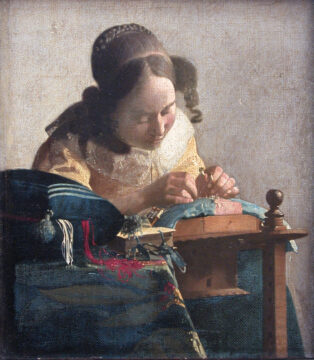Matthew Longo at The Point:

In Dutch Golden Age art, the normal is odd, and the extraordinary is ordinary. The saying in Moser’s title—“upside-down world”—derives from a Dutch expression, “de omgekeerde wereld or de wereld op zijn kop [the world stood on its head],” used to describe “when the normal order of things is reversed.” Carel Fabritius’s famous painting, The Goldfinch (1654), is a good example. It is a simple portrait of a bird chained to its feeding box. “Nothing about it should make it unforgettable—but it is unforgettable,” Moser writes.
What makes these paintings so recognizable is that their ordinary is our ordinary too. No one better exemplifies this than Vermeer, whose work foregrounds individual subjectivity, especially in its modern, secular form. This comes out clearly in his use of light—crisp, outrageous even, often streaming in from an open window—which casts his subjects into relief and lifts them from their settings. In The Milkmaid (ca. 1657-58), a woman, front-lit, pours milk from a jug; the backdrop behind her is bare. Originally a rack had been affixed to the wall, which Vermeer later painted over. He preferred the contrast of his subject’s body against the plain wall, bringing her out of the clutter and into the light.
more here.
